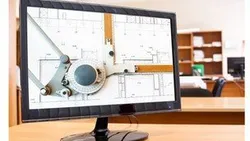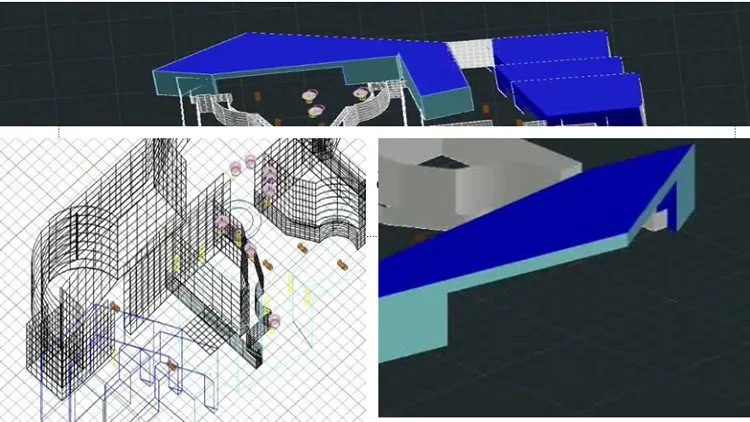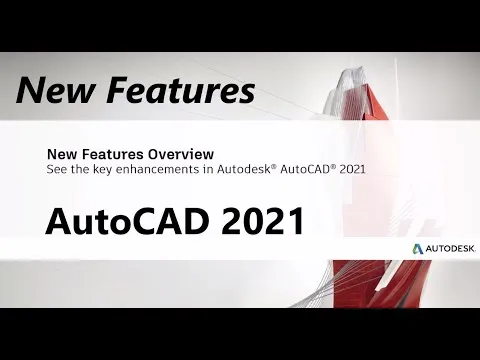
AutoCAD Basic Commands for Beginners with practical Approach 
This course provides a practical approach to learning the basic commands and shortcuts of AutoCAD, enabling beginners to create house plans with confidence. ▼
ADVERTISEMENT
Course Feature
![]() Cost:
Cost:
Free
![]() Provider:
Provider:
Udemy
![]() Certificate:
Certificate:
Paid Certification
![]() Language:
Language:
English
![]() Start Date:
Start Date:
On-Demand
Course Overview
❗The content presented here is sourced directly from Udemy platform. For comprehensive course details, including enrollment information, simply click on the 'Go to class' link on our website.
Updated in [April 29th, 2023]
This course is designed to help beginners learn the basics of AutoCAD and its commands. It covers the fundamentals of AutoCAD, including the workspace, tools, and commands. It also provides an introduction to the use of modify tools to edit and improve designs. The course includes examples, practice files, and real-life applications of each command.
Possible Development Directions:
This course provides a great foundation for further development in AutoCAD. learners can move on to more advanced topics such as 3D modeling, advanced drawing techniques, and automation.
Related Learning Suggestions:
In addition to this course, learners can benefit from other AutoCAD courses such as AutoCAD Advanced Commands, AutoCAD 3D Modeling, and AutoCAD Automation. They can also explore other CAD software such as SolidWorks, Fusion 360, and Inventor.
[Applications]
Learners will be able to apply the AutoCAD Basic Commands for Beginners with practical Approach to create 2D drawings and use AutoCAD tools to modify and improve their designs. Learners will also be able to use the commands and shortcuts to automate tasks such as comparing drawings, counting, adding blocks, creating schedules, and more. Additionally, learners will be able to use actual engineering drawings as data files and apply the commands to real life scenarios of designing and drafting.
[Career Paths]
1. AutoCAD Drafter: AutoCAD Drafters use AutoCAD software to create technical drawings for a variety of industries, including architecture, engineering, and manufacturing. They are responsible for creating detailed drawings of products, structures, and components, as well as preparing layouts, plans, and diagrams. The demand for AutoCAD Drafters is expected to grow as the need for more detailed and accurate drawings increases.
2. AutoCAD Designer: AutoCAD Designers use AutoCAD software to create 3D models and drawings for a variety of industries, including architecture, engineering, and manufacturing. They are responsible for creating detailed designs of products, structures, and components, as well as preparing layouts, plans, and diagrams. The demand for AutoCAD Designers is expected to grow as the need for more detailed and accurate designs increases.
3. AutoCAD Technician: AutoCAD Technicians use AutoCAD software to create technical drawings for a variety of industries, including architecture, engineering, and manufacturing. They are responsible for creating detailed drawings of products, structures, and components, as well as preparing layouts, plans, and diagrams. The demand for AutoCAD Technicians is expected to grow as the need for more detailed and accurate drawings increases.
4. AutoCAD Programmer: AutoCAD Programmers use AutoCAD software to create custom programs and scripts for a variety of industries, including architecture, engineering, and manufacturing. They are responsible for creating custom programs and scripts to automate tasks, as well as creating custom user interfaces and tools. The demand for AutoCAD Programmers is expected to grow as the need for more efficient and automated processes increases.
[Education Paths]
1. Bachelor of Science in Computer Aided Design (CAD): This degree program focuses on the use of computer-aided design software to create 3D models and drawings. Students learn how to use AutoCAD and other CAD software to create technical drawings, design products, and develop prototypes. This degree program also covers topics such as engineering design, mathematics, and physics. This degree is becoming increasingly popular as more companies are using CAD software to design products and develop prototypes.
2. Master of Science in Computer Aided Design (CAD): This degree program focuses on advanced topics in CAD software, such as 3D modeling, animation, and virtual reality. Students learn how to use AutoCAD and other CAD software to create complex 3D models and drawings. This degree program also covers topics such as engineering design, mathematics, and physics. This degree is becoming increasingly popular as more companies are using CAD software to design products and develop prototypes.
3. Certificate in Computer Aided Design (CAD): This certificate program focuses on the use of AutoCAD and other CAD software to create technical drawings, design products, and develop prototypes. Students learn how to use AutoCAD and other CAD software to create 3D models and drawings. This certificate program also covers topics such as engineering design, mathematics, and physics. This certificate is becoming increasingly popular as more companies are using CAD software to design products and develop prototypes.
4. Associate of Science in Computer Aided Design (CAD): This degree program focuses on the use of AutoCAD and other CAD software to create technical drawings, design products, and develop prototypes. Students learn how to use AutoCAD and other CAD software to create 3D models and drawings. This degree program also covers topics such as engineering design, mathematics, and physics. This degree is becoming increasingly popular as more companies are using CAD software to design products and develop prototypes.
Pros & Cons

Very helpful for beginners.

Things are well explained.

Fun and detailed for beginners.

Not enough examples.

No dimensioning aspects.

Not enough standard rules.
Course Provider

Provider Udemy's Stats at AZClass
Discussion and Reviews
0.0 (Based on 0 reviews)
Explore Similar Online Courses

Freelancer to Agency Founder: The Truth About the Agency Business

Natural Dyeing: Transform Cloth Using Food Dyes with The Dogwood Dyer

Python for Informatics: Exploring Information

Social Network Analysis

Introduction to Systematic Review and Meta-Analysis

The Analytics Edge

DCO042 - Python For Informatics

Causal Diagrams: Draw Your Assumptions Before Your Conclusions

Whole genome sequencing of bacterial genomes - tools and applications

Learn Autocad basics from projects

Autodesk AutoCAD 2021 Essential Training Course


Start your review of AutoCAD Basic Commands for Beginners with practical Approach